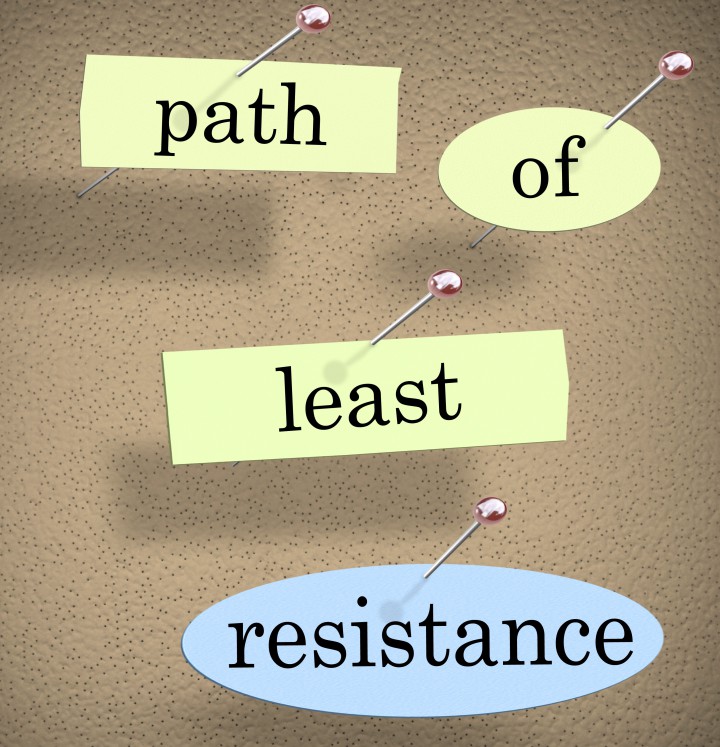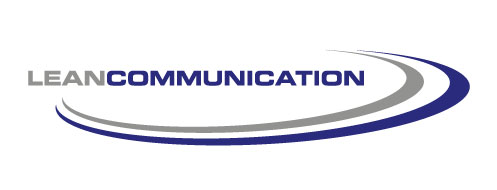User-friendly Language Part 3: Friction
In this three-part series on user-friendly language, we’ve seen how we make it too hard for listeners to understand us, either by blowing smoke on purpose, or generating FOG inadvertently. While we can go a long way to clearing up our communication by getting rid of those, we may still get tripped up by friction.
Friction slows down vehicles and saps the power from their engines. Friction in communication does the same thing: it’s my name for speech patterns that prevent you from being as smooth and confident-sounding as you should. These patterns can reduce value of your message and add to waste in its expression. They reduce the likelihood that people will believe your message and act on it—if someone asked you to do something, would you be more likely to agree if they sound completely confident and sure of their message?
The two forms of friction that add waste to communication and reduce clarity are hedges and filler words.
Hedges
Hedges are phrases that pull your message back from absolute, such as, I think, maybe, it seems, and so on. They can make it seem so that you don’t sound totally confident in what you’re saying. It’s common sense, but there are also numerous studies that confirm that they “lead to negative perceptions of the policy, source and argument.”[1]
Hedges are not bad, if they are intended as such. In some cases, you need grey areas, so you may want to use them as qualifiers. For example, you may not want to intend or signal complete certainty. If you say, “I think we’re going to make the schedule”, you are raising a flag that alerts your listener that there may be risks, and they can probe for more information if they choose. In the study referenced above, use of the “professional hedges” are not perceived poorly by listeners, and may in fact add to your credibility.
But hedges become a problem when they’re a normal part of your speaking style, even when you’re completely certain of something. They sap power from the strength of your statements and rob the courage of your convictions.
The only way to combat these stylistic hedges is to become aware of them, which you can do by listening to yourself, or by asking others for their opinion. Once you’re aware, it’s not hard to catch yourself and weed them out, but it does take discipline and practice to make it a permanent part of your style.
Filler words
Filler words are funny. On one hand, everyone knows that they can be a problem for speakers, and in fact they are the most-commented-on behaviors that peer coaches in my presentations classes pick up on. On the other hand, very few people realize the extent to which they themselves use them. I’m not referring just to ums and ahs; you know, like, and so are also extremely common, the latter two more so among millennials.
Filler words are not always a bad thing; so don’t obsess over them. They’re a normal part of two-way conversation, and in that case they’re actually useful because they let the other person know you’re not done with what you’re saying. By some estimates, we use filler words once every ten words, and it’s usually not noticeable because they’re so common—ordinary speech is infested with them.
The problem is that when you speak to groups, they don’t add anything to what you’re saying, and can be a problem when they’re excessive. The president of the bank where I once worked was a magnetic and dynamic speaker in small groups, but when the audience hit double digits, he would morph into a stuttering blob of jelly—so much so that it became a terrible distraction.
What does excessive mean? There’s no numerical definition, but the simple rule is that they are a problem when others begin to notice them. You’ve probably been in that situation when listening to a speaker: if you pick up on their filler words, you soon pay attention to nothing else.
In that case, you’ve got some work to do to minimize (complete elimination is possible, but usually is not worth the effort) them. The first step is to figure out if it’s a problem; you can try to listen to yourself to gauge it, or ask a colleague for their opinion, because you are usually not the best judge.
The simple advice is to become comfortable with silence—there’s no need to “fill” a pause with sound. In fact, pure silence can do more than simply avoid the friction of a filler word—it can in fact add power to your speech.
But that’s easy to say and hard to do, so if that doesn’t work, the next step is to create consequences. Toastmasters International has a practice called the “ah” bell, in which a designated audience member rings a bell every time a filler word is uttered. It’s tough love, but it works amazingly well. Having attention called loudly and embarrassingly to each filler word quickly primes your mind to get rid of them. I’ve also had success with clients who offered to pay their colleagues a quarter (or more) for every one they hear.
Besides awareness and consequences, one of the best antidotes to filler words is preparation and practice. The more you know your material, the less likely you’ll find yourself searching for the next thought or the right word. I’m especially reminded of that myself as I explore the unfamiliar territory of recording video; it’s always so much smoother after one or two tries to find my stride.
In our distracted world, simply maintaining someone’s attention is a difficult challenge, so you should do everything you can to make it easy for others to grasp your messages. That’s why lean communicators do themselves and their listeners a favor by making their language user-friendly—free of smoke, fog, and friction.
[1] For example: Amanda M. Durik, M. Anne Britt, Rebecca Reynolds, Jennifer Storey, The Effects of Hedges in Persuasive Arguments, 2008: Journal of Language and Social Psychology.






